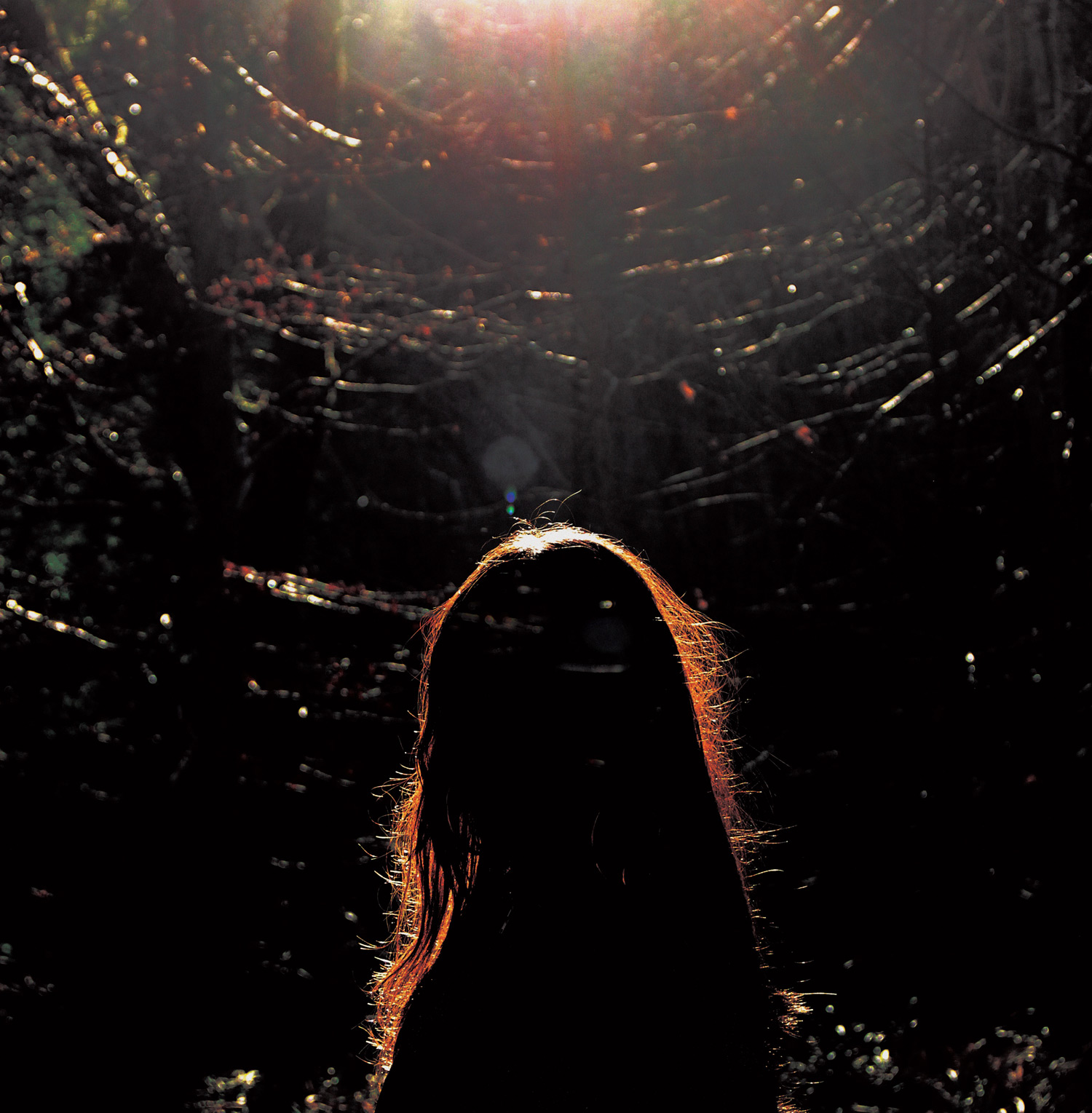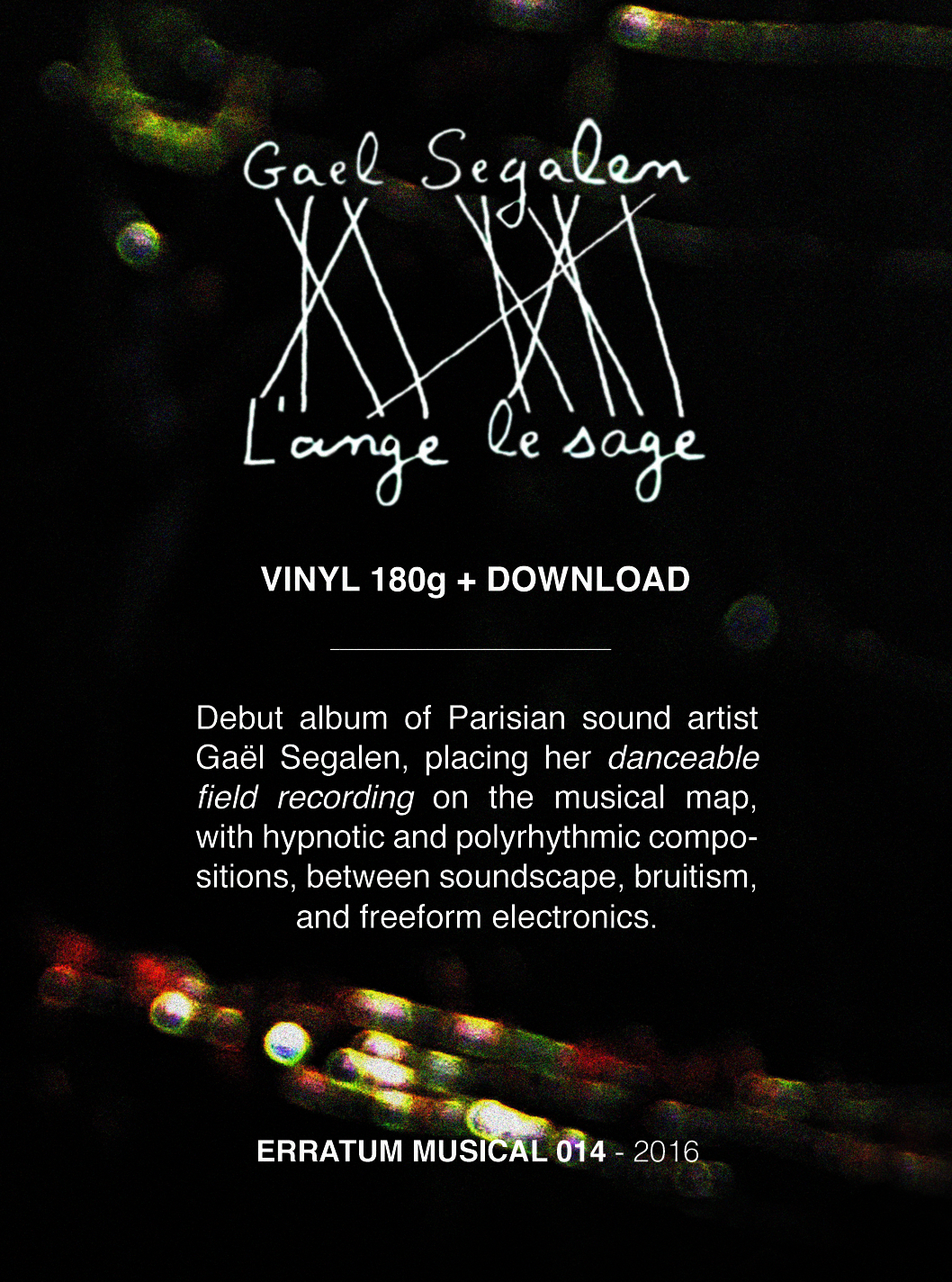
GAEL SEGALEN – L’ANGE LE SAGE – LP 180g on Erratum + Bandcamp
release 12 june 2016 / VINYL 180g + DOWNLOAD / Recorded, composed and mixed in Paris by Gaël Segalen between 2013 and 2015 / Mastered and cut by Frederic Alstadt / Artwork Joachim Montessuis / Published by Erratum Musical – EM014 – 2016 / Distributed by Metamkine



Le travail de Gaël Segalen est un bel exemple de la rencontre des enregistrements de terrain avec la musique électronique, celle de la nuit et des corps en mouvement. Elle parle d’ailleurs de “Danceable Field Recording”. “L’ange le sage” est une musique électroacoustique qui prends ses distances du studio pour chasser le motif dans son quotidien, son rythme et sa vie … une hypnose polymorphe. Metamkine
—
The absorbing and intricate debut album L’ange le sage (“The Wise Angel”) from Parisian Gaël Segalen at times is like a crowded, costumed ball with unusual sound figures rubbing up against each other in both welcome and unwelcome ways.
Sound, as an art form, can be understood as a form of wordless communication, transcending language, and well-crafted sound combinations and minglings can inspire complex responses, beyond simple, basic emotions.
The most enlightening writing about Segalen’s work and sources that this reviewer has encountered is her commentary that accompanies a playlist she assembled five years ago, where she discusses her attraction to foreign languages that she could not understand and her passion for listening to dialogue, especially arguments.
This makes perfect sense, listening to L’ange le sage, with atypical polyrhythms formed by loops reacting with each other; familiar sounds, like the chimes and tinkling bells on “Ascension” are forced to interact with noises that are not easily placed. It can be hypnotic and disquieting in its otherworldly way, with the most tenuous tie to dance music with lightly pulsing subterranean bass drum beats, in non-obvious patterns, heard occasionally on “Ascension.”
Industrial repetition is evoked, with relates to Segalen’s affinity for the rhythm of engines (mentioned in the aforementioned commentary), with an oppressive roar of simulated machinery in the background messiness.
“Taïra” builds tension in the odd grey area between terror and horror, and for this writer, the album’s most interesting and compelling track is “Symétrique à la lune” (“Symmetrical to the Moon”) which assembles neutral sounds and human breaths to create a powerful piece provoking a tangled, gut-wrenching sadness—like the rumblings of a building about to crumble and collapse, or the sustained crunch of a tall, healthy tree that is being chopped down and falling.
September 28, 2016
